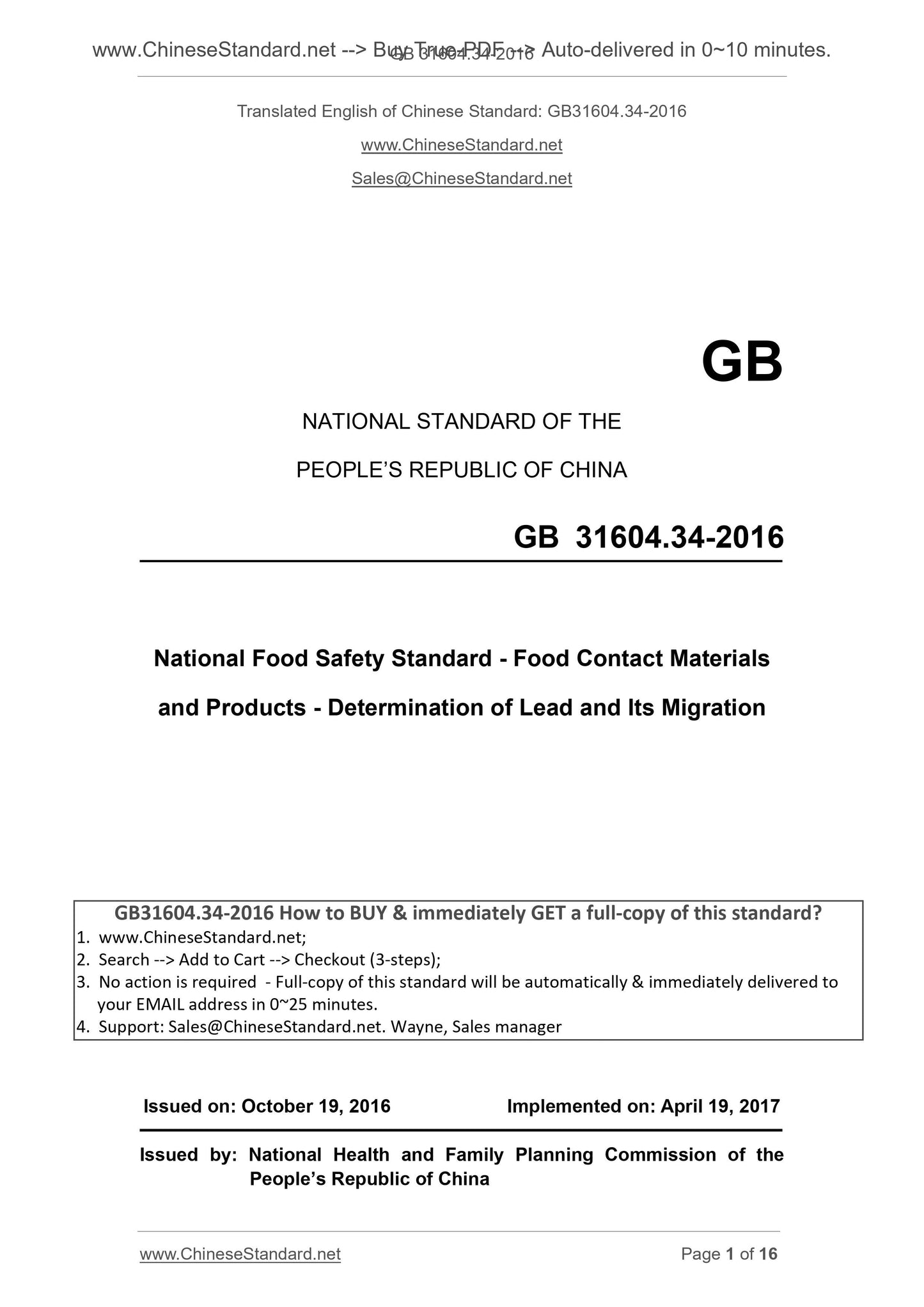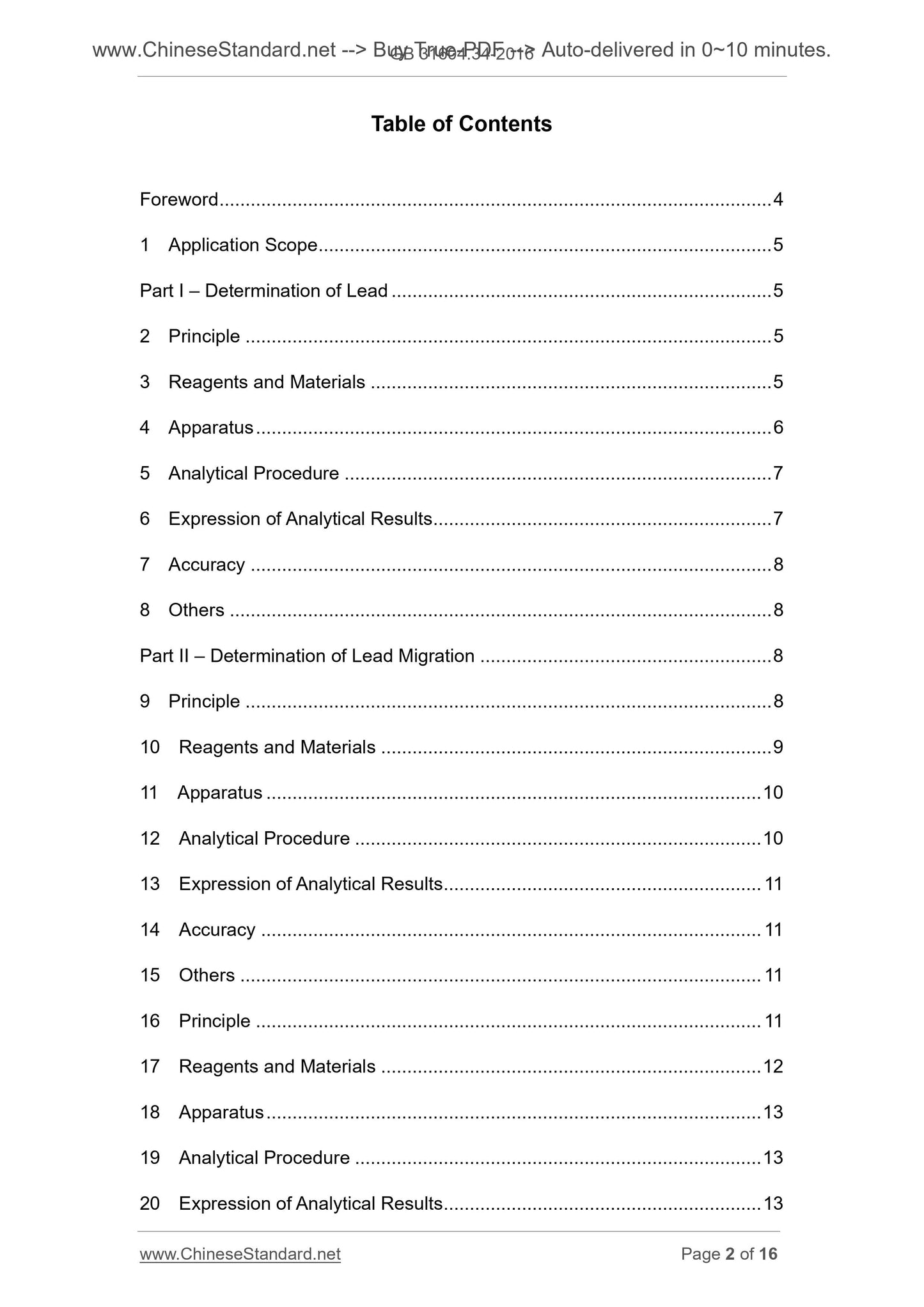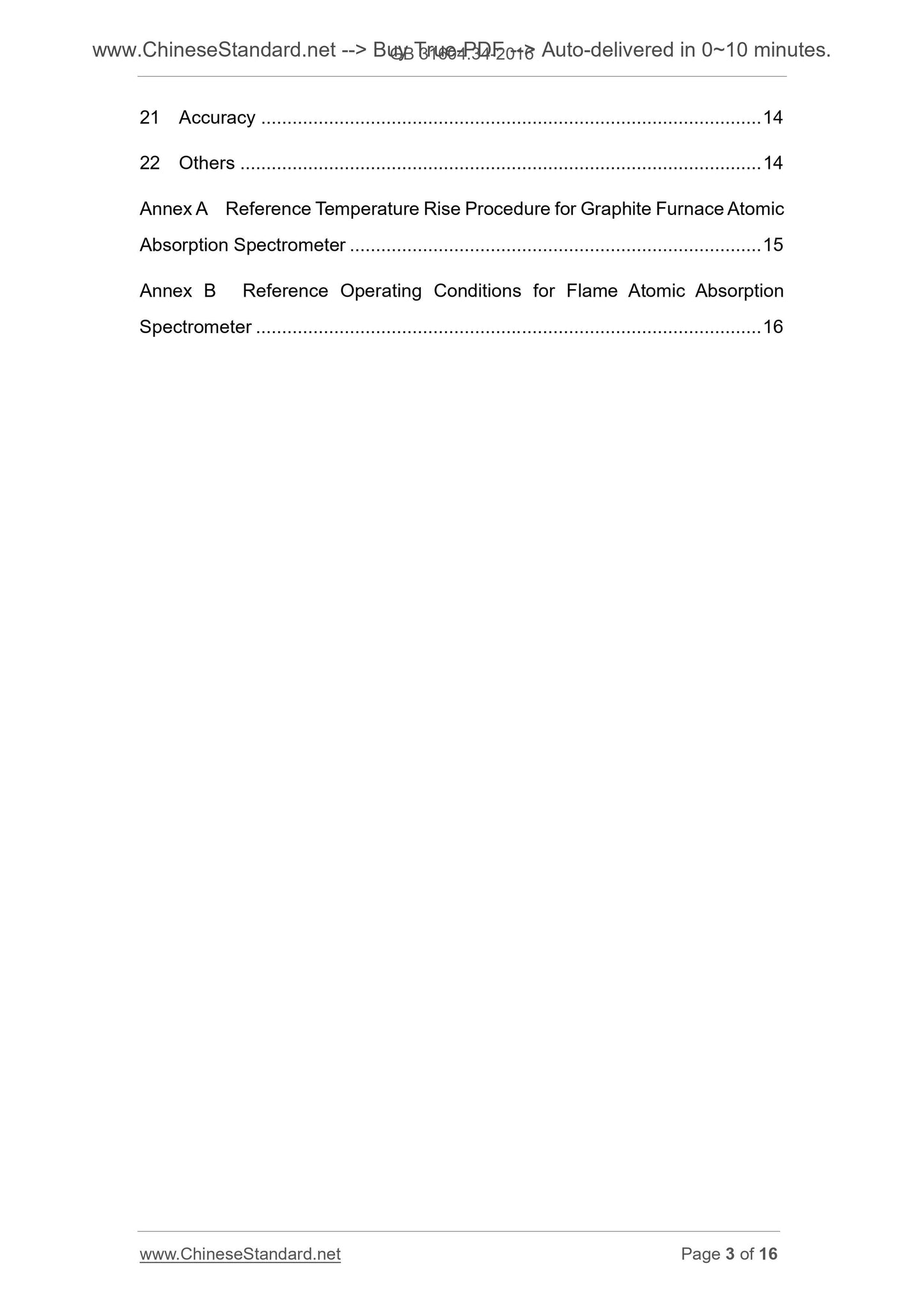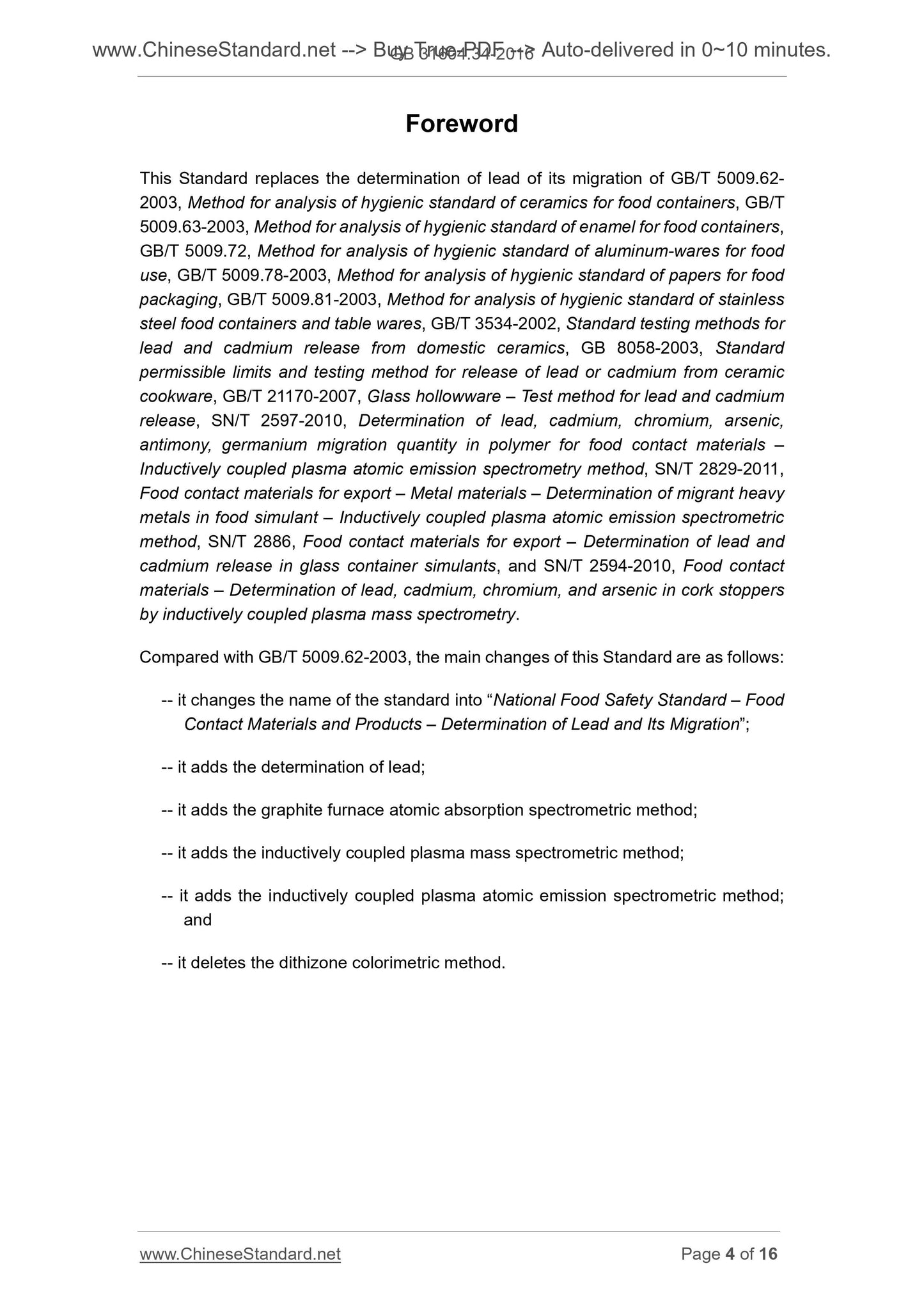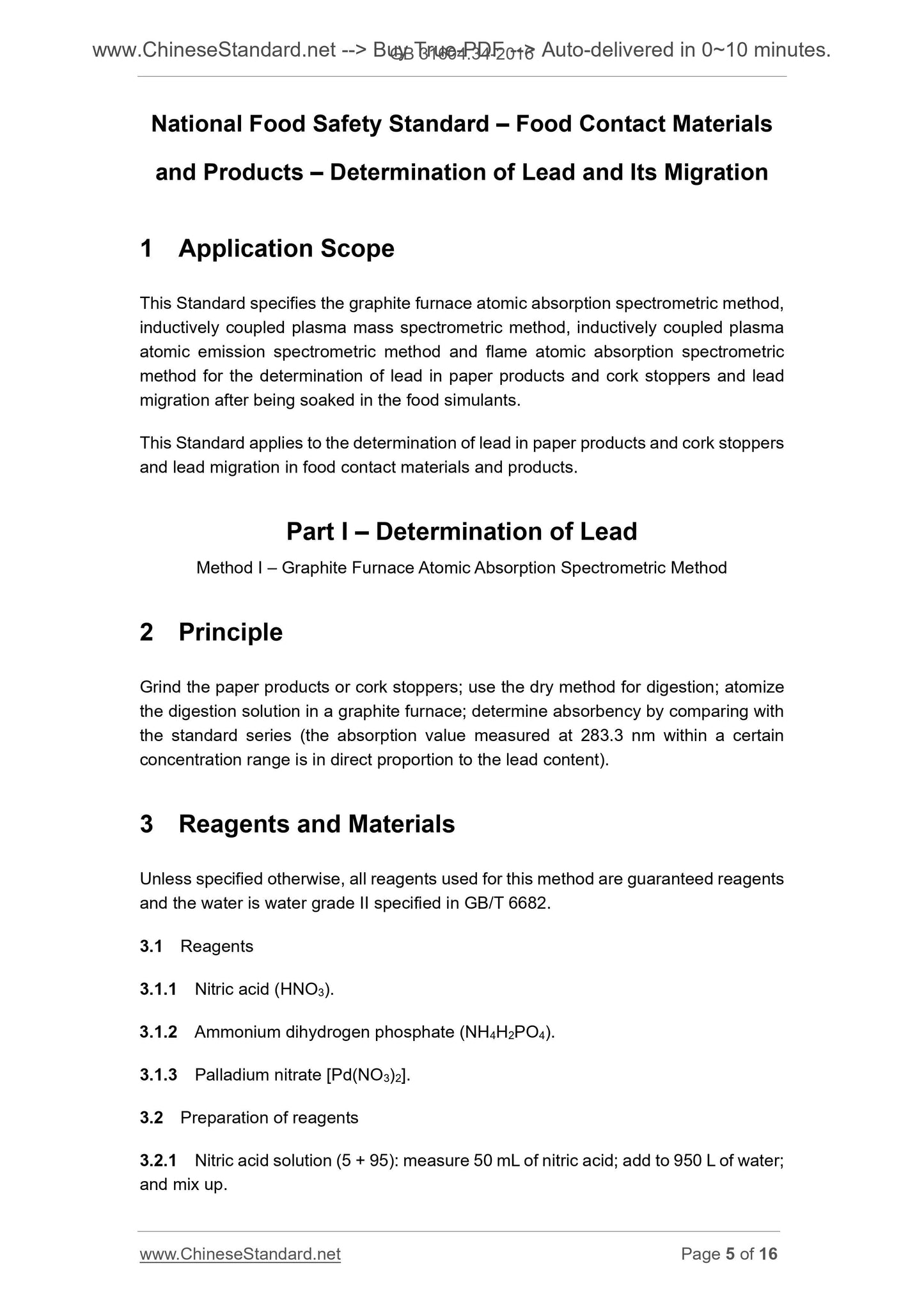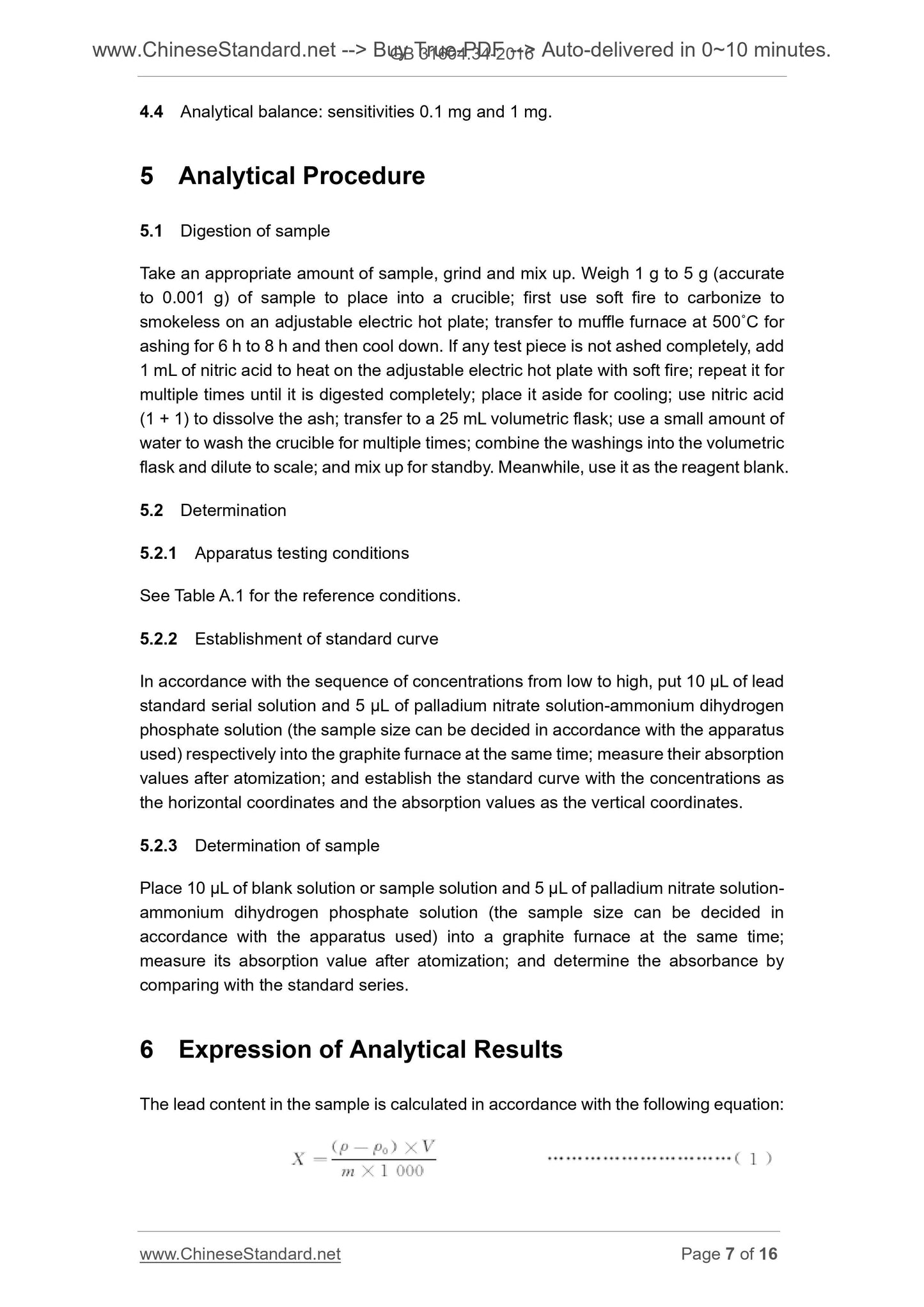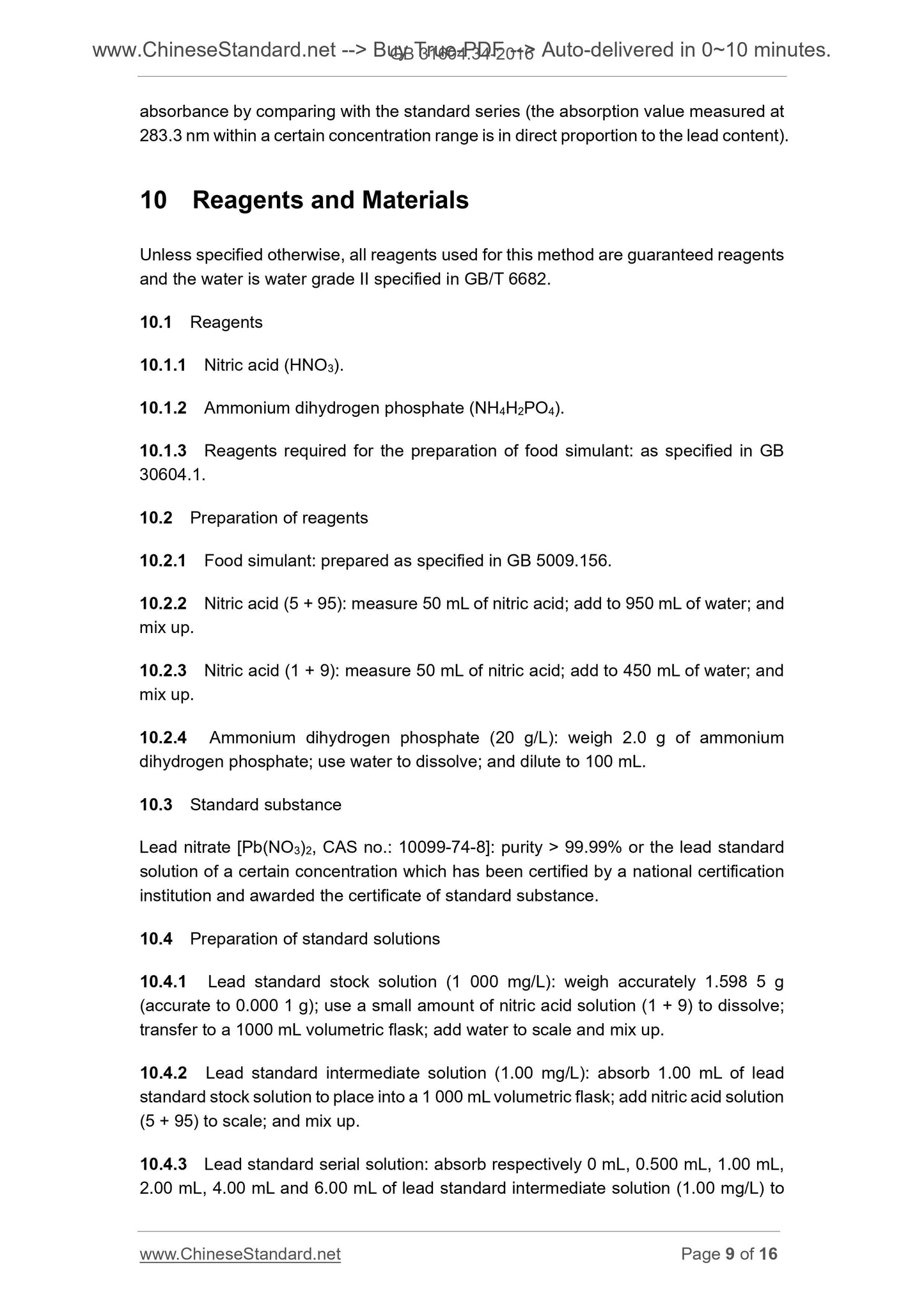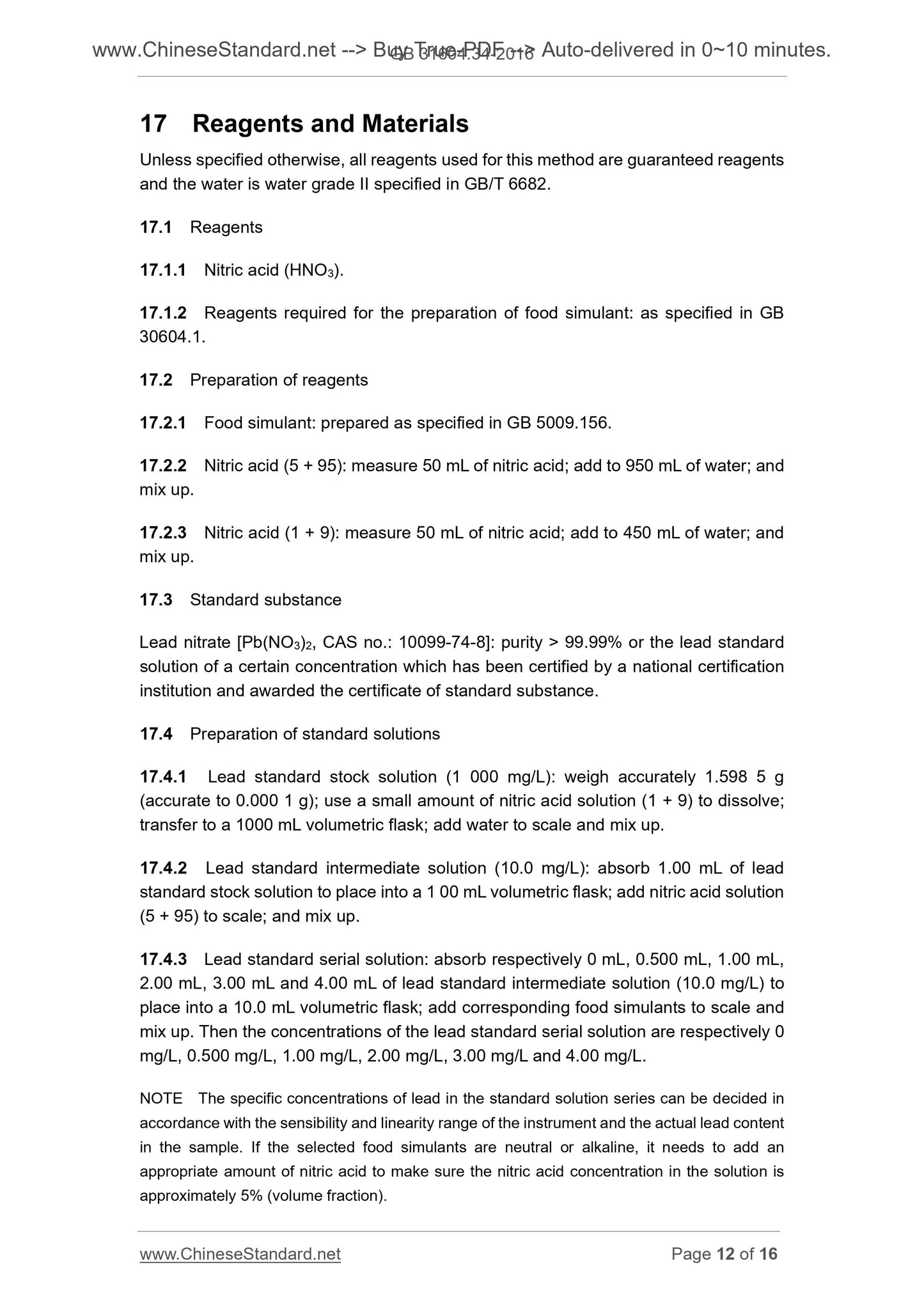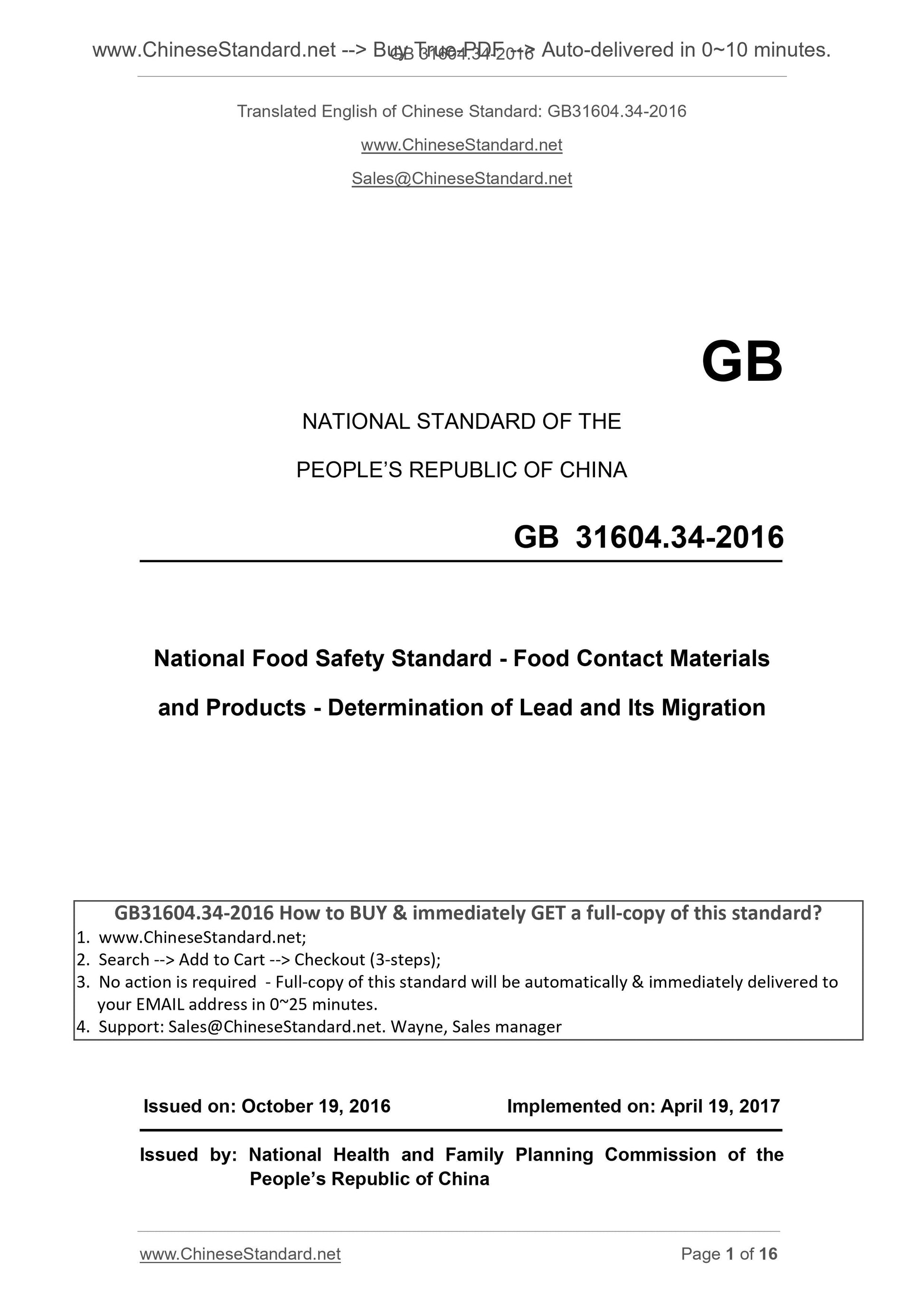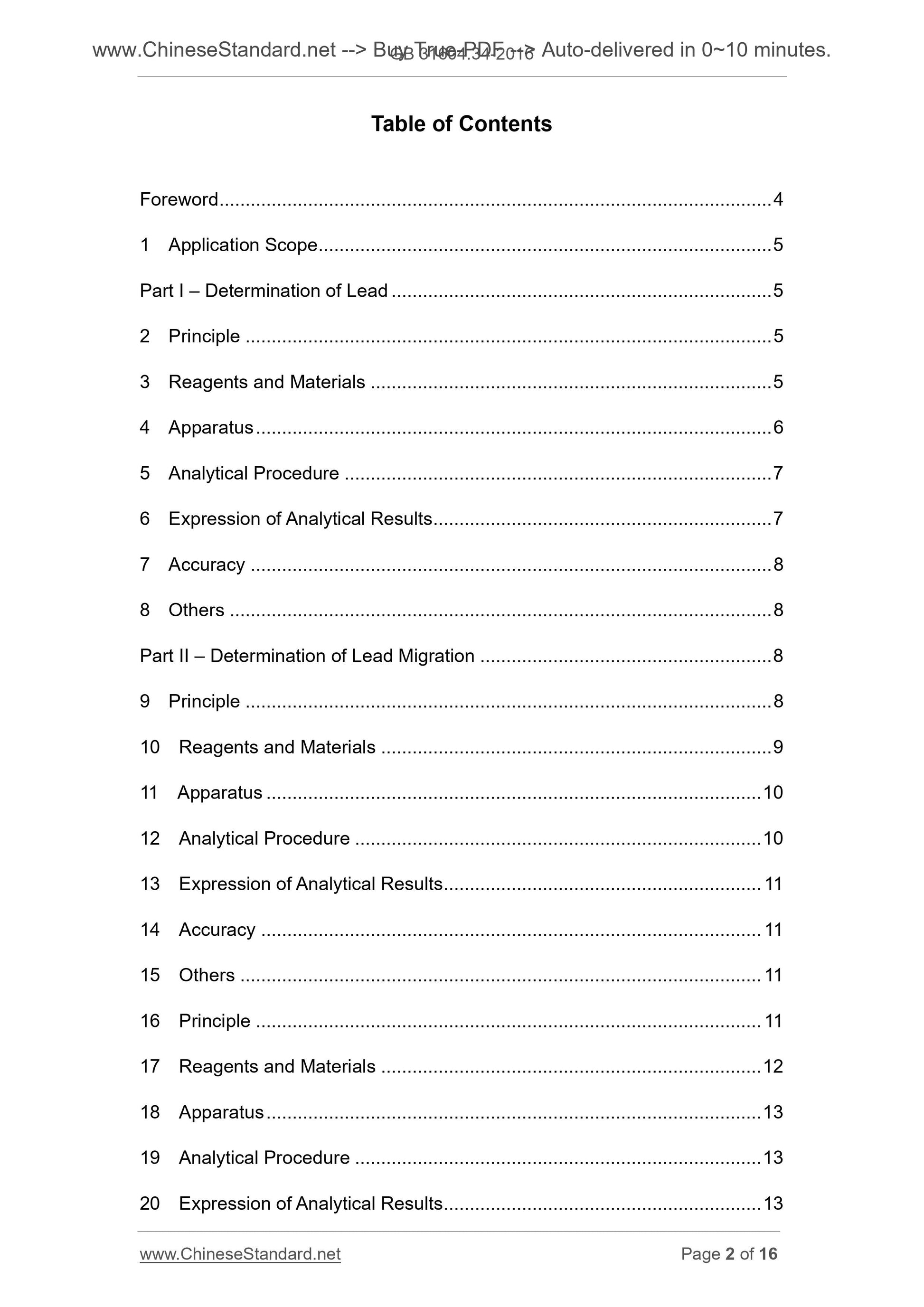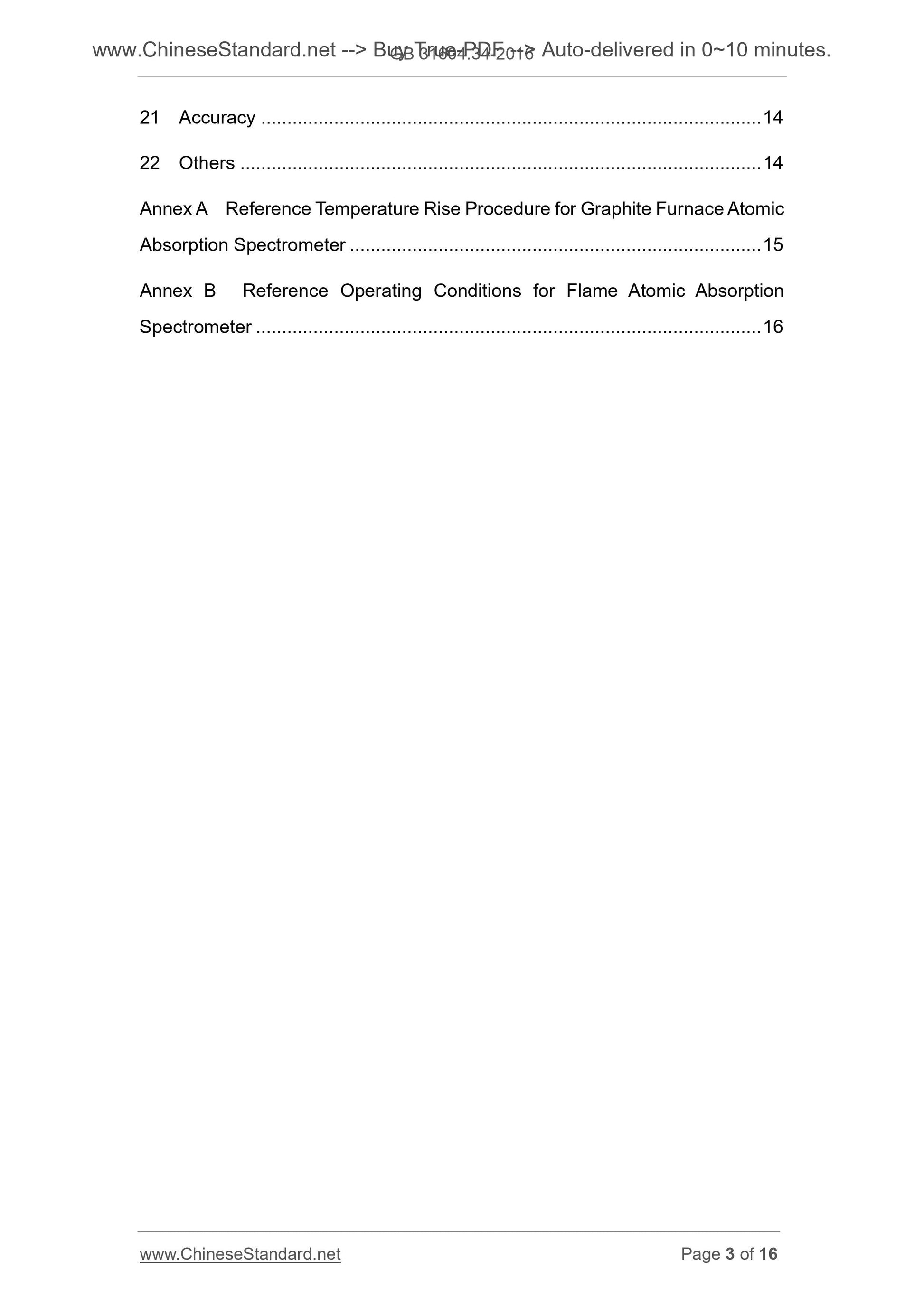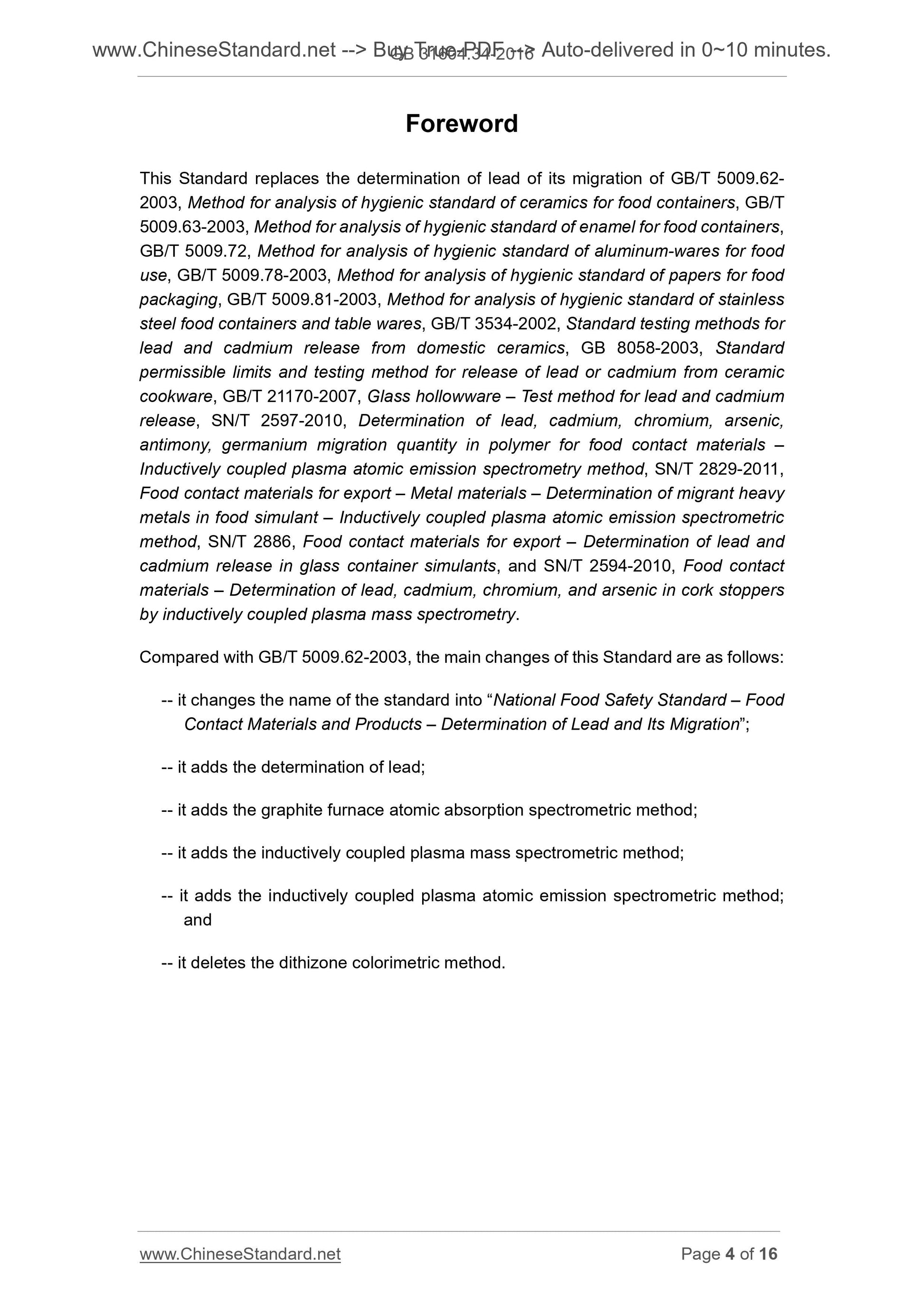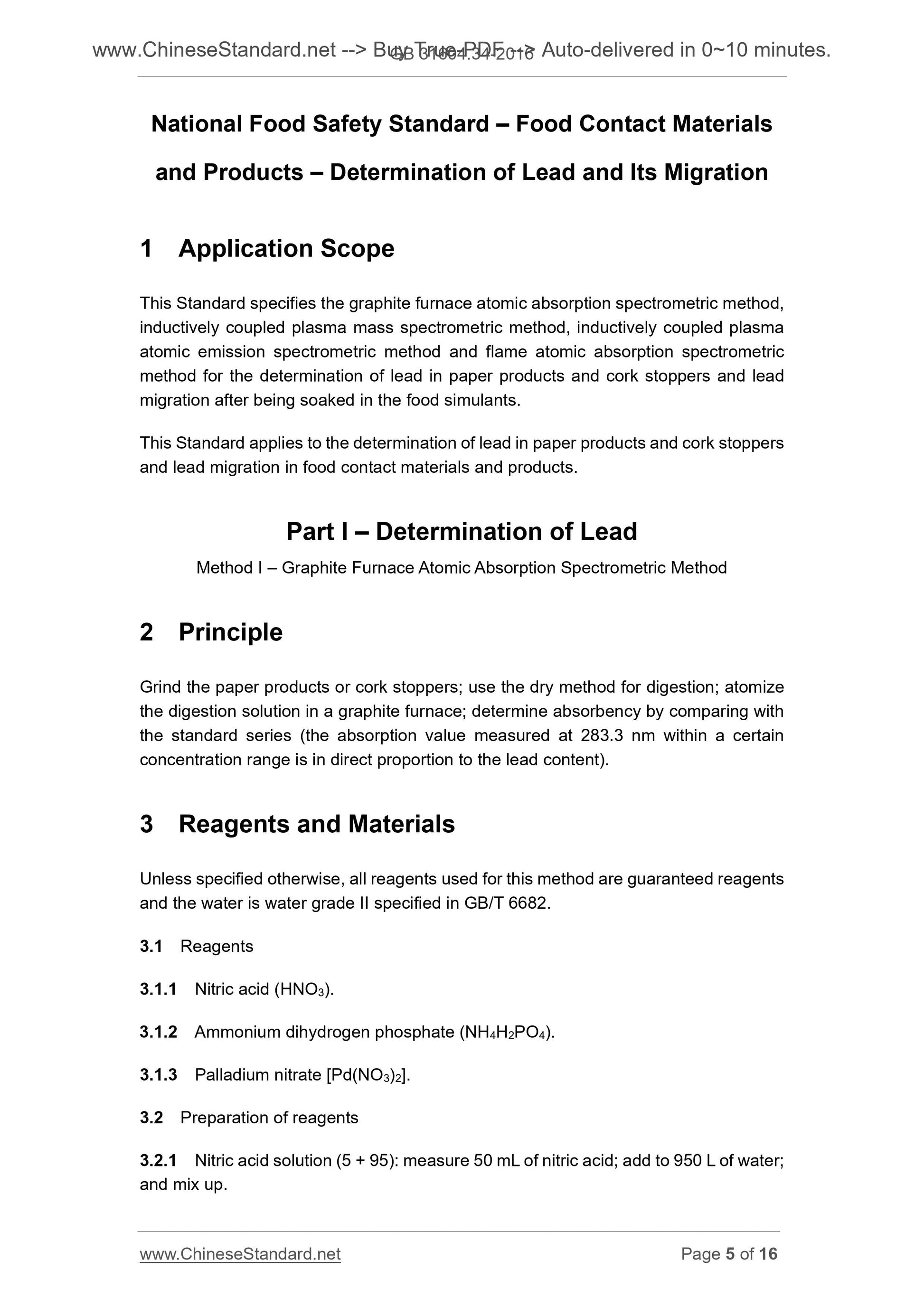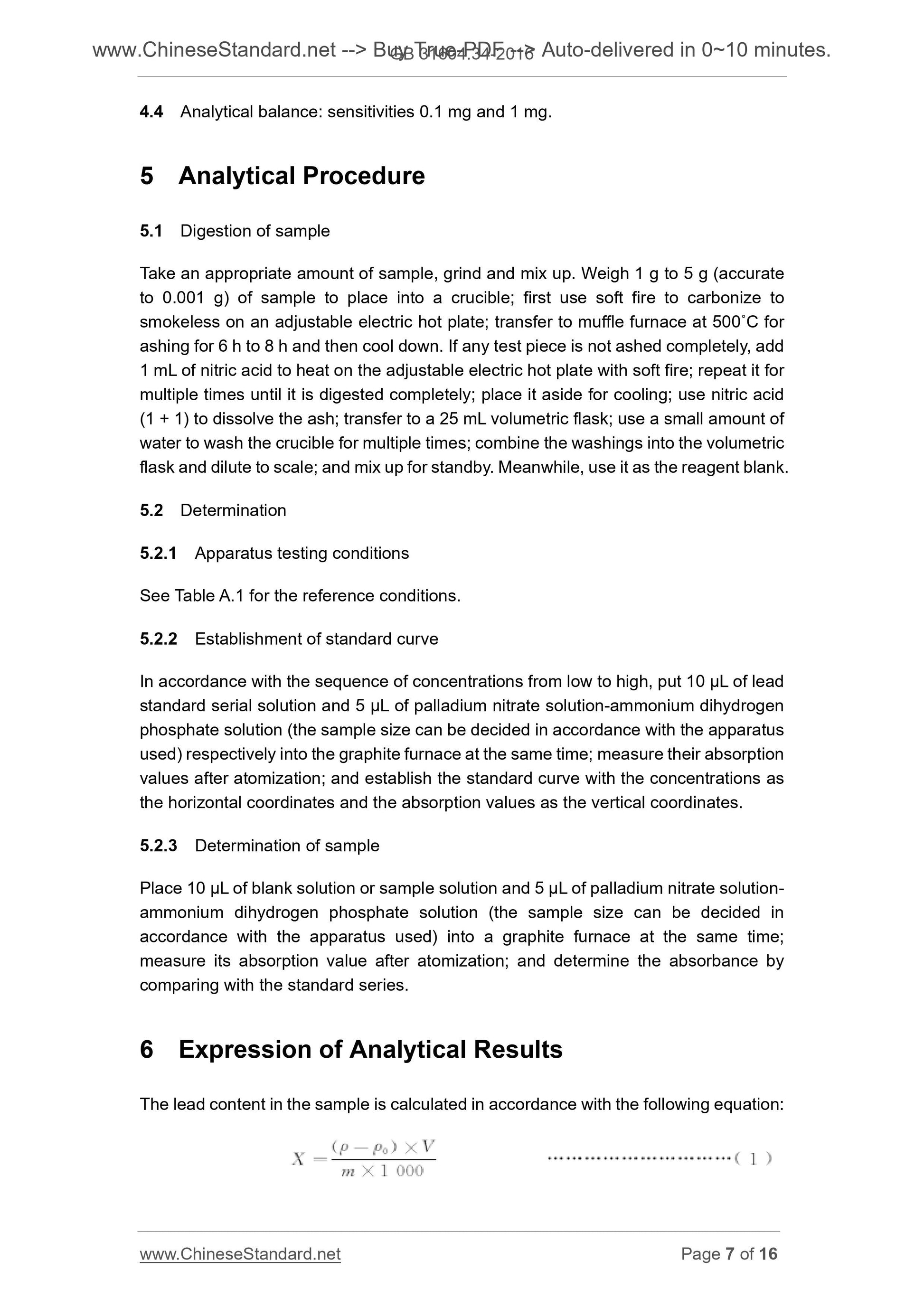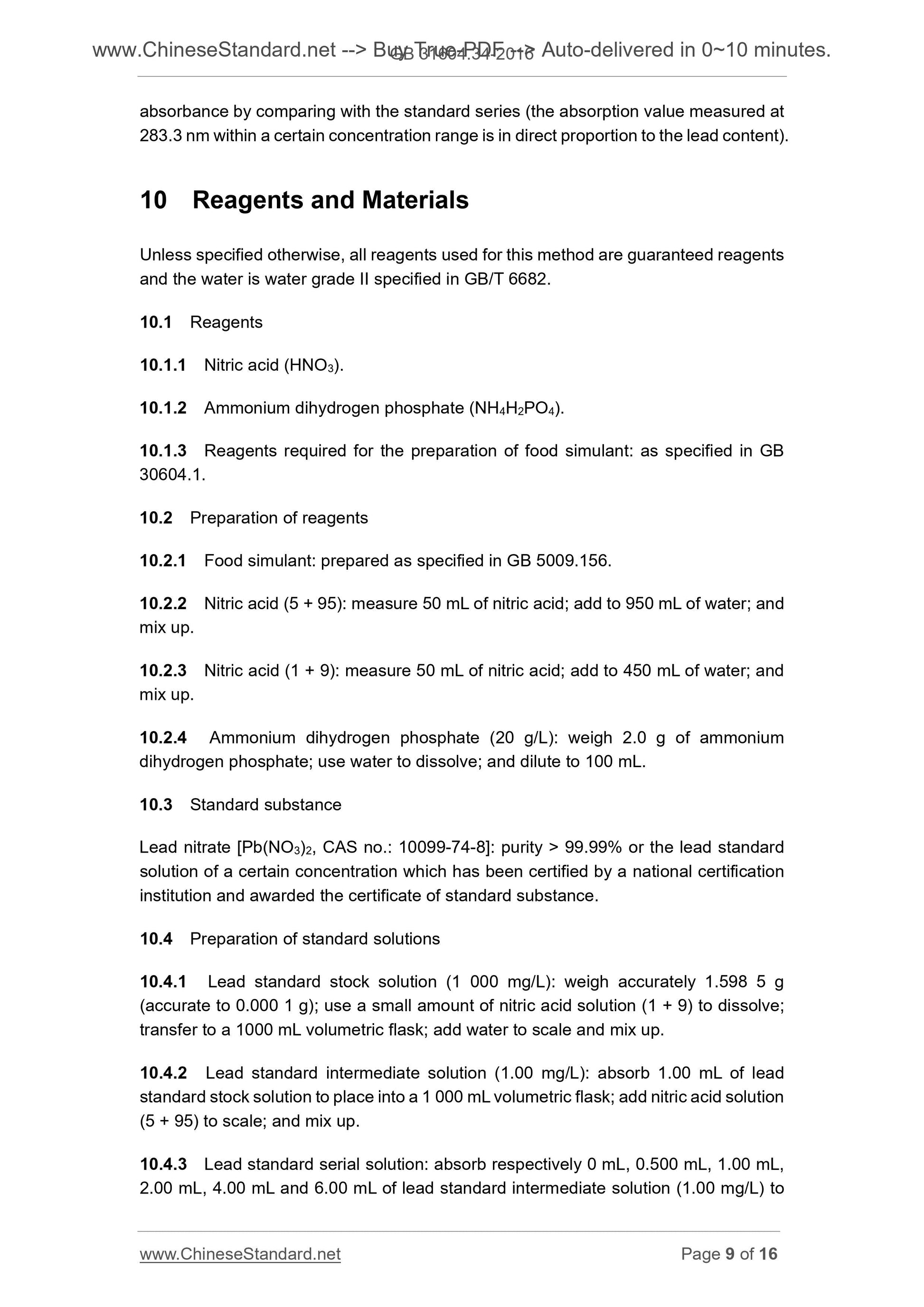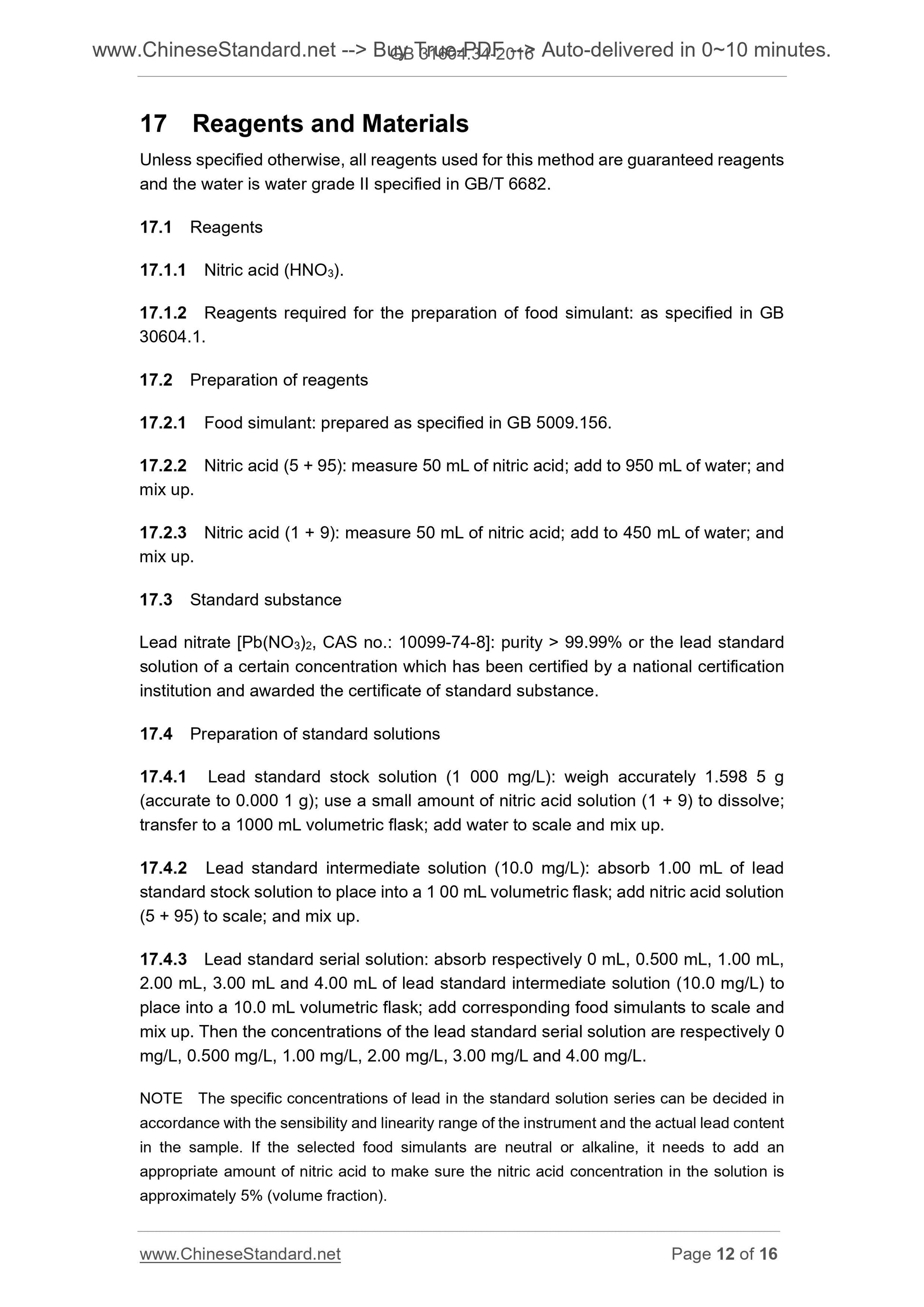1
/
of
8
www.ChineseStandard.us -- Field Test Asia Pte. Ltd.
GB 31604.34-2016 English PDF
GB 31604.34-2016 English PDF
Regular price
$95.00
Regular price
Sale price
$95.00
Unit price
/
per
Shipping calculated at checkout.
Couldn't load pickup availability
GB 31604.34-2016: National food safety standard - Food Contact Materials and Products - Determination of Lead and Its Migration
Delivery: 9 seconds. Download (and Email) true-PDF + Invoice.Get Quotation: Click GB 31604.34-2016 (Self-service in 1-minute)
Newer / historical versions: GB 31604.34-2016
Preview True-PDF
Scope
This Standard specifies the graphite furnace atomic absorption spectrometric method,inductively coupled plasma mass spectrometric method, inductively coupled plasma
atomic emission spectrometric method and flame atomic absorption spectrometric
method for the determination of lead in paper products and cork stoppers and lead
migration after being soaked in the food simulants.
This Standard applies to the determination of lead in paper products and cork stoppers
and lead migration in food contact materials and products.
Part I – Determination of Lead
Method I – Graphite Furnace Atomic Absorption Spectrometric Method
Basic Data
| Standard ID | GB 31604.34-2016 (GB31604.34-2016) |
| Description (Translated English) | National food safety standard - Food Contact Materials and Products - Determination of Lead and Its Migration |
| Sector / Industry | National Standard |
| Classification of Chinese Standard | C53 |
| Word Count Estimation | 12,151 |
| Date of Issue | 2016-10-19 |
| Date of Implementation | 2017-04-19 |
| Older Standard (superseded by this standard) | SN/T 2886-2011 Partial; SN/T 2829-2011 Partial; SN/T 2597-2010 Partial; SN/T 2594-2010 Partial; GB/T 5009.81-2003 Partial; GB/T 5009.78-2003 Partial; GB/T 5009.72-2003 Partial; GB/T 5009.63-2003 Partial; GB/T 5009.62-2003 Partial; GB/T 3534-2002 Partial; GB/T 21170-2007 Partial; GB 8058-2003 Partial |
| Regulation (derived from) | State Health and Family Planning Commission Notice No.1516 of 2016 |
| Issuing agency(ies) | National Health and Family Planning Commission of the People's Republic of China, State Food and Drug Administration |
Share
